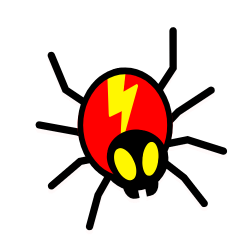Since we are getting real-world information as fast as possible when it comes to dealing with Internet technologies, it’s no wonder that favicons are a very important part of SEO. Different symbols represent different things to people. If they are not well-designed, favicons can easily ruin the user experience. The icon in the address bar is often set up for a better impression that the page leaves on the user.
What is a favicon, and is it important for SEO?
A favicon is an icon that in graphically way displays a website visually. This is the small icon we are looking at in the list of saved favorite pages that is in the bookmarks list. You can create a favicon icon either manually using a variety of programs, or you can do it quickly and without much effort using the online generator tool.
Favicons can help users navigate through a website or use the app. Let’s take a look at the benefits that favicons can contribute to the website:
- Favicons are quick to recognize at first glance (if they are well-designed) – that is especially true for standard favicons that people have seen or used before.
- There is no need to translate favicons for international users, assuming that favicons are aware of cultural differences.
- Favicons can be visually appealing and enhance the aesthetic appeal of the design.
- They support the concept of family outfit or match when the same favicons and style are used in several places.
- Favicons support content on your website.
- They can also increase readability.
- Favicons can serve as graphic tags by structuring a web page.
- Website icons used as favorite icons can also enhance usability and user experience.
What kind of image is this favicon?
While most current browsers can recognize favicon GIF, PNG, and JPG formats, Internet Explorer does not currently support it. It is advised that you use the Microsoft ICO format that works in all browsers.
- PNG: The PNG format is beneficial for a variety of reasons. A PNG file does not require any additional equipment to produce, making it incredibly user-friendly. It produces the shortest file size feasible and provides alpha transparency.
- SVG: This format is available and supported by Opera browsers.
- GIF: This format has no advantages other than being compatible with older browsers. While they attract more attention to users, they also annoy, and the overwhelming belief is that they are not advantageous.
- JPG: While this format can be utilized, it is less widespread and does not give the same resolution quality as PNG. Furthermore, because of the tiny size of the favicon, the JPEG loses all of its advantages.
- Windows ICO: The ICO has the advantage of being able to include numerous resolutions and bit depths, which works quite well and is especially important for Windows. ICO also provides a 32-pixel icon that may be used on the Internet Explorer Windows 7 taskbar. It’s also the only one that doesn’t make use of the link> element.
- APNG: This is an animated variant of PNG that, while supported by Firefox and Opera, suffers from the same issues as animated GIFs in that it distracts users when they are looking at their interface.
What should the size of my favicon be?
An advantage of using the ICO format is that it may contain numerous favicons of varying sizes in a single ICO file. It is preferable to have at least a 16×16 pixel version.
I always include 32×32 and 48×48 versions, so if the users drag the bookmark to their desktop, they will get a perfectly sized version of the icon rather than the stretched-out 16×16 version.
Again, 16px is normally preferred since it can be used across all browsers, but if you want to build a favicon for every potential purpose, follow the instructions below:
- 16px: Could be shown in the address bar, tabs, or bookmarks in all browsers. views
- 32px: Safari’s “Read Later” sidebar
- 57px: iOS home screen standard (iPod Touch, iPhone first generation to 3G)
- 72px iPad home screen icon
- The Google TV platform uses a 96px favicon.
- iPhone 4+ home screen icon, 114px (twice the standard size for the retina display)
- Chrome Web Store 128px
- Opera Speed Dial 195px
Conclusion
Icons play an important part in SEO. It may seem that the website icons are almost a negligible part of the website, but that is far from the truth. Conversely, a well-designed favicon can increase usability and improve user experience. If the icons on your website are visually appealing and they are easy to understand and find, it will allow users to navigate through the page, support your content, and increase readability.

Jay
I've worked for WooRank, SEOptimer, and working on a cool SEO audit tool called SiteGuru.co. Now I have build Linkilo and SEO RANK SERP WordPress theme. I've been in the SEO industry for more than 5 years, learning from the ground up. I've worked on many startups, but also have my own affiliate sites.
TRY OUR FULLY SEO-OPTIMIZED WORDPRESS THEME FOR AFFILIATE MARKETERS!
No need to hire SEO experts anymore to fix your site technical SEO issues
IMPROVE YOUR SITES RANKING TODAY